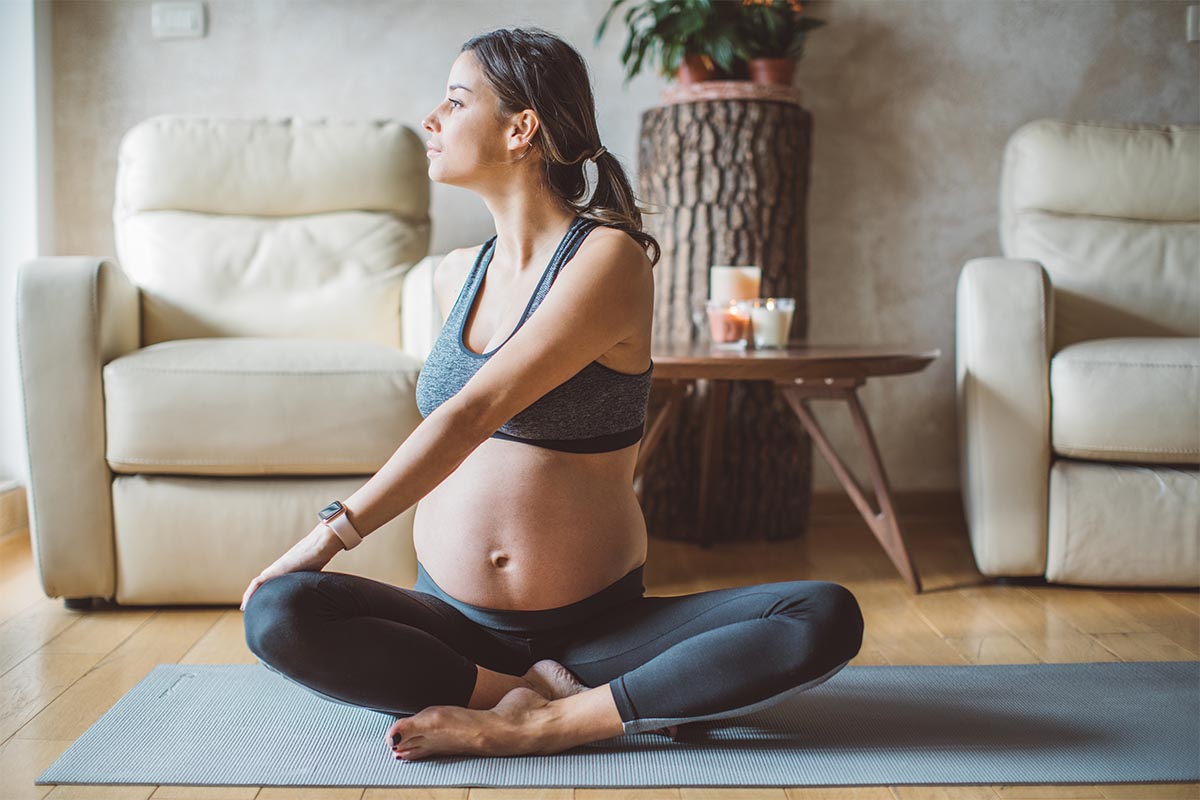
Exercising while pregnant can be a totally different experience, even for the most dedicated fitness fans. Having an expert provide guidance gives you confidence you’re getting the most benefit from your efforts. Knowing why exercising is beneficial to you and your baby can help keep you motivated throughout your pregnancy.
According to Women’s Health Physiotherapist Claire Kennedy, persevering with a fitness plan during pregnancy can provide many advantages including improved mental health for new mothers and a reduction in typical aches and pains associated with pregnancy.
"There are so many health benefits for remaining active and doing structured exercise while pregnant," Claire says.
There are potential benefits for both mum and bub when exercise is part of pregnancy. According to Claire, pregnant mothers who remain active throughout their pregnancy experience:
- reduced risk of gestational diabetes
- healthy rate of weight gain
- decreased risk of pre-eclampsia
- reduced back and pelvic pain
- reduced risk of pregnancy-related depression and anxiety.
New bubs also benefit.
There’s research to show that exercising during pregnancy can improve fetal cardiac function, and evidence to suggest a decreased incidence of instrumental delivery,” Claire says.
Claire endorses the World Health Organisation guidelines for exercise and says regular physical activity during pregnancy promotes health benefits.
“The biggest thing for expectant mothers and after giving birth is trying to keep it as simple as possible. It doesn't have to be that complicated in what they actually do for their exercise,” Claire says.
"We break it down into four parts: frequency, intensity, time and the type of exercise.
"We call it the FITT principle."
Claire recommends the following FITT principle guidelines:
- Frequency – Aim for a minimum of three days of exercise per week
- Intensity – Moderate intensity is best. You should be able to hold a conversation but not be able to sing.
- Time – Try for 150 minutes of exercise a week, spread over a few sessions (for example, 30 minutes of exercise on five days a week)
- Type – Low-impact, cardiovascular exercises such as walking, swimming, Pilates and some circuit training.
In most instances pregnancy should not prevent you from continuing regular activity or exercise. Make sure to check with your doctor or midwife about what exercises are safe for your pregnancy.
"You don't have to stop doing most things, but it’s definitely not a time to start something new ,” Claire says.
"If you’re not a runner before pregnancy, it’s not a great time to start a running program.”
Some activities should be avoided while pregnant and Claire recommends a gentler approach to fitness, especially as your pregnancy progresses. She advises to err on the side of caution and avoid the following activities:
- Exercise in excessive heat or humidity, including Bikram yoga
- Contact and collision sports like footy, soccer or martial arts
- Activities with a high risk of falling like horse-riding, gymnastics or box jumps
- Heavy weightlifting where you could inadvertently knock your belly bump.
If you experience any of the following symptoms while exercising you should stop the activity and contact your doctor or midwife:
- vaginal bleeding or your waters have broken
- a change in your bub’s normal movements
- regular painful contractions
- unusual shortness of breath
- headache, dizziness, or blurred vision
- loss of balance
- vomiting
- pain in your back, chest, stomach or pelvic area
- sudden swelling in your face, hands or ankles
- calf pain or swelling.
Disclaimer
This article contains general information only and does not take into account the health, personal situation or needs of any person. In conjunction with your GP or treating health care professional, please consider whether the information is suitable for you and your personal circumstances.